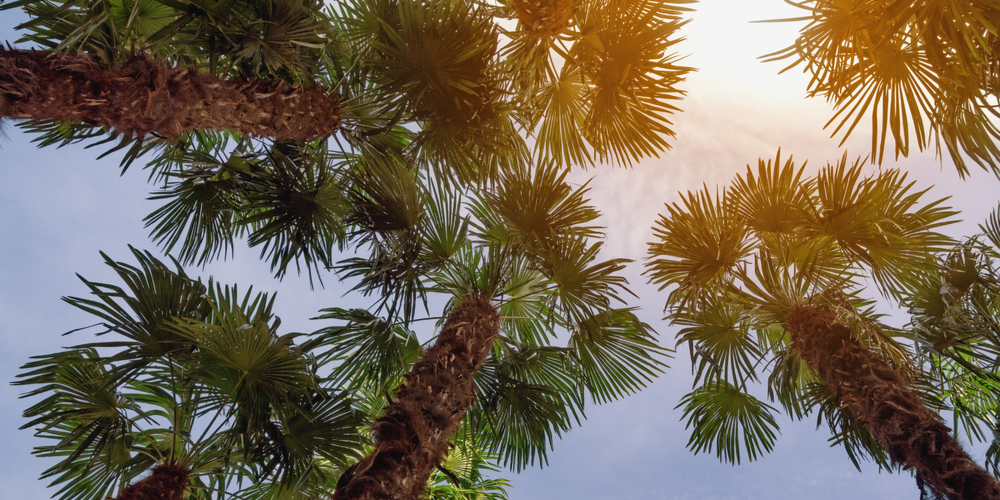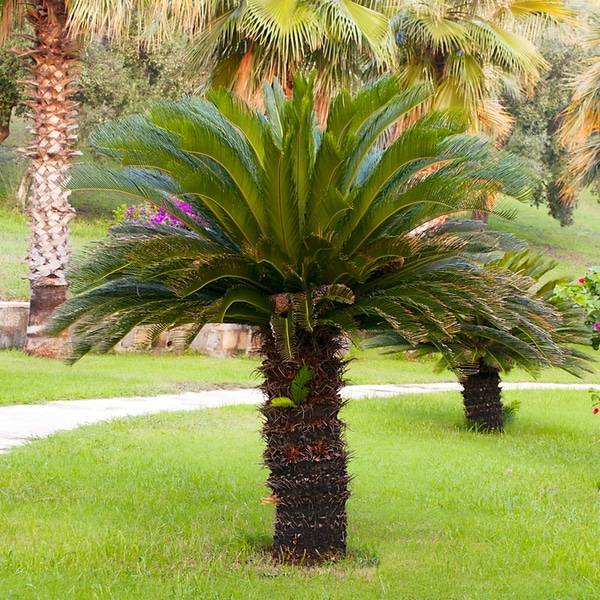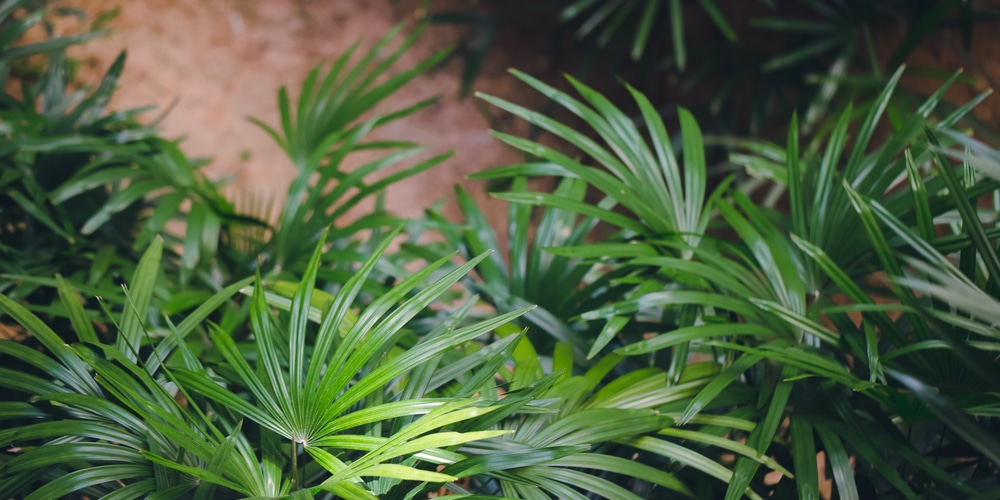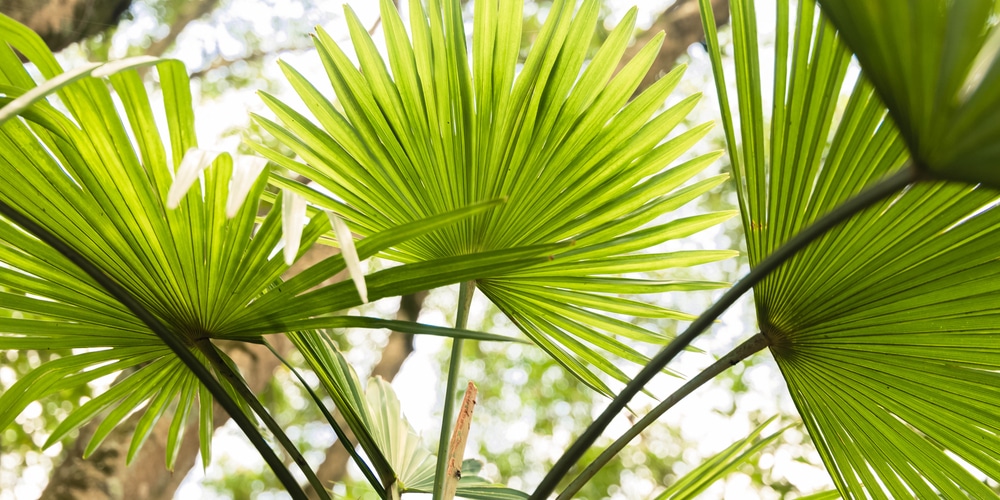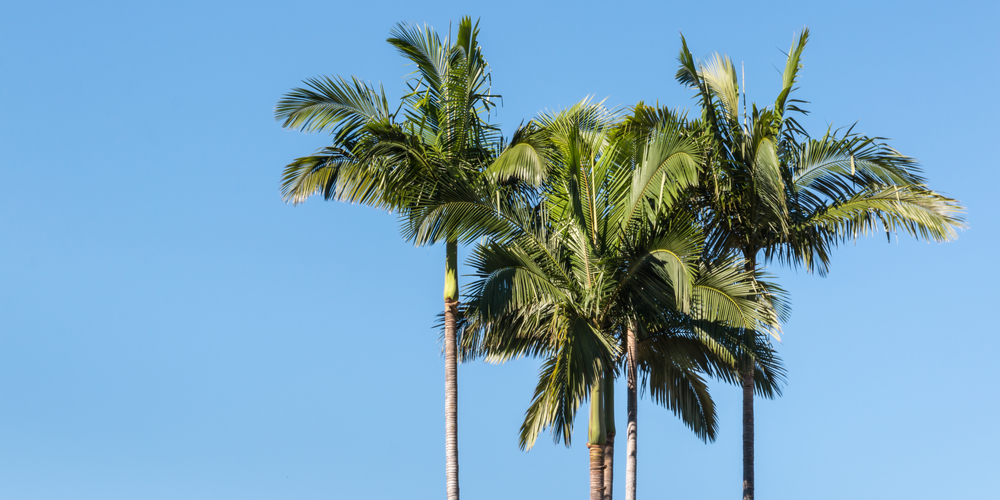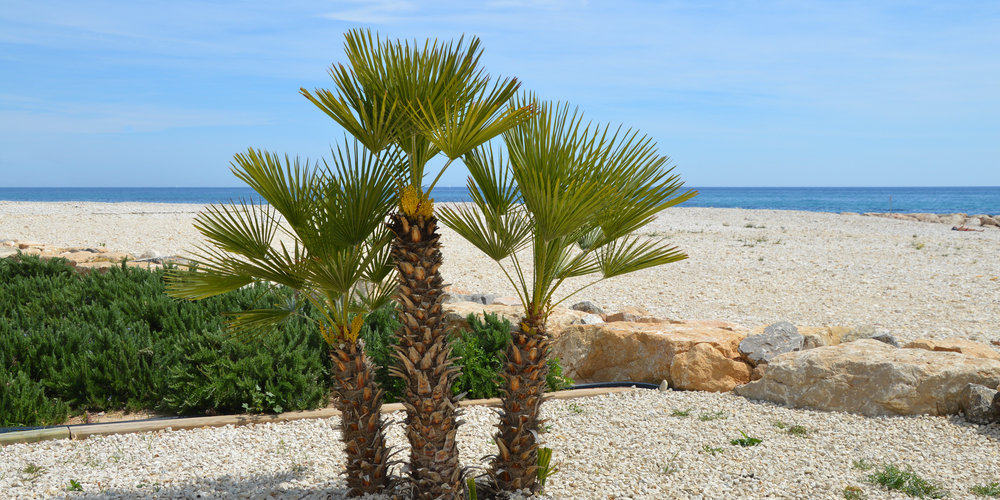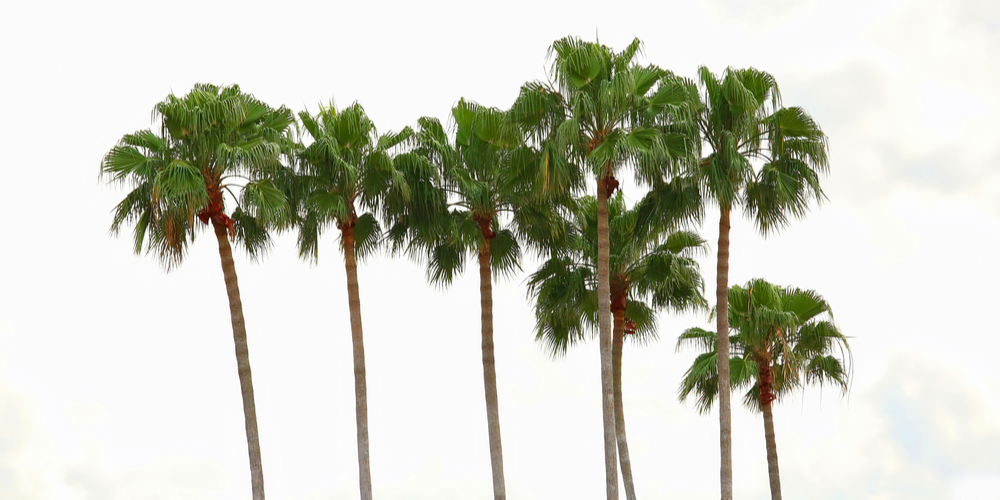It’s hard to imagine a California landscape without palm trees. However, there are dozens of palm tree varieties that you might be tempted to ask, ‘are palm trees native to California?’
It may sound surprising, but there’s only one palm tree species that’s native to California. The distinction belongs to the Washingtonia filifera, or otherwise known as the California Palm.
Are palm trees native to California? California Palm Trees
The tall palm trees in Southern California that are prominently displayed in landscapes are actually not native to the state.
Most of the palm trees you see now came from Mexico and were imported in 1930 for ornamental purposes. Then, the trend spread and people began planting them along boulevards and large streets in the city.
Washingtonia filifera has a lot of names, including the California fan palm and desert fan palm. It’s the only palm that’s native to California and looks a bit different from the palm trees you see in postcards and films.
California fan palm belongs to the Arecaceae family and can grow up to 60 feet in height with a 20 feet spread. It’s hardy in zones 8 through 11 and can grow in other states, including Arizona, Florida and Nevada.
The evergreen palm acts like a tree, with a singular thick trunk and shiny and thin green-gray leaves. Get it established and the plant will produce tubular blooms that are white in color and turn into pea-sized fruits. It’s worth noting that the California fan palm is the largest palm that’s native to the US.
8 Palm Tree Varieties You Can Grow
Sago Palm
Sago Palm is technically not a palm variety but it does bring a tropical and palm-like interest in your landscape. It’s great for providing accents in low places and where you need lush greenery.
It’s also a slow grower and doesn’t mind being placed in containers or pots.
Related Article: How Much Do Sago Palms Cost?
Date Palm
Date palms, particularly the resort-types are tall, majestic and showy. The upward palm growth won’t provide adequate shade but they’re great in somewhat confined spaces.
These palm varieties are often used in public places as they can survive long periods of drought as well as heat. You can also group three or more together to achieve a tropical or desert oasis effect.
Pygmy Date Palm
One of the most versatile palm plants around in terms of landscaping. Like its namesake, the Pygmy palm observes a dwarfish growth compared to other palms and they can be tamed in a container or tight spots such as around courtyards or pools. Pygmy palms can tolerate a bit of shade as well.
Mediterranean Fan Palm
A mid-sized palm plant with multi-trunk growth habits, the Mediterranean fan palm can work as a central focus in your yard or garden. It’s quite popular because of the way it looks and how it can withstand neglect for a long time once established.
Mediterranean fan palms are both heat and cold hardy and can surprisingly survive freezing weather. It can grow in USDA zones 8 through 11.
Pineapple Palm
Pineapple Palms are commonly called Canary Island Date Palms and live in several regions in the US, including Texas, Arizona and Southern California. The reason why it got its name is because of the curious pineapple shape in the junction between the leaves and trunk.
King Palm
King palm offers some of the best colors in the species, with dark green and healthy looking leaves spreading out against the sky.
The tree also produces attractive blooms colored purple and having a white undertone. As it grows its canopy reaches wide and offers excellent shade.
Windmill Palm
A medium-sized palm tree with windmill-like foliage, the Windmill Palm never fails to start a conversation.
Young windmill palms can grow in containers and indoors as long as it gets bright indirect sunlight. You can use it in entryways, gardens, patios and narrow spaces.
Hybrid Mexican Fan Palm
The Hybrid Mexican Fan Palm has a thicker trunk than most and a more manageable height compared to California and traditional Mexican varieties.
The species is known for growing vigorously and spreading out its leaves when subjected to a warm and sunny condition. To really show off the tree in your landscape it’s recommended that you employ strategic lighting at night.
Related Article: Indoor Palm Trees
